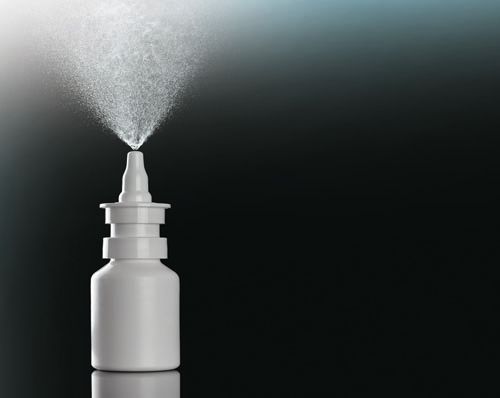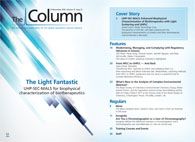Nasal Spray Evaluation Using Thin Layer Chromatography
Research on nasal spray formulation has yielded an improved in vitro analytical test method utilizing thin layer chromatography (TLC). The research used simulated nasal mucus with varying properties and a TLC apparatus to assess the dripping behaviour of nasal formulations to improve the nasal spray development process.Nasal Spray Evaluation Using Thin Layer Chromatography
Photo Credit: Picsfive/Shutterstock.com

Research on nasal spray formulation has yielded an improved in vitro analytical test method utilizing thin layer chromatography (TLC). The research used simulated nasal mucus with varying properties and a TLC apparatus to assess the dripping behaviour of nasal formulations to improve the nasal spray development process (1).
Nasal mucus is produced in abundance by the nasal mucosa when in a healthy state, and to excessive levels during illness or in those suffering from conditions such as allergic rhinitis, sinusitis, or the common cold. The mucus serves to protect the tissues lining the nasal canal and ensnare unwanted substances. Consisting primarily of water (95%), the physical characteristics of mucus are primarily dictated by the glycoproteins (2.5%) present. Features such as viscosity, elasticity, adhesiveness, and the ability to be spun and poured are all considered important when testing nasal formulations.
Nasal sprays are a relatively unique method of delivering medication, and are used to treat numerous topical diseases from allergies to viral infections, as well as emerging uses such as vaccination delivery and migraine treatment. During treatment development, the adherence of the nasal spray to the mucosa and patient comfort are two of the most important factors. The development of non-dripping nasal sprays, usually containing thixotropic agents, addressed these two issues and a simple in vitro method of a paper sheet as a spray substrate was used to assess the dripping behaviour and to guide the development of the medicines. However, this method fails to accurately replicate the conditions present within the nasal cavity and the varying interactions of the mucus and the spray - in particular, the characteristics of the mucus, which can vary considerably from “watery” to thick and viscous.
Researchers used a unique steel apparatus to simulate a nasal spray featuring a TLC plate capable of being positioned perpendicular during the spraying action before being repositioned vertically to fully simulate nasal spray application. Key parameters were measured, such as the nasal spray dripping timeâelapse profile, which was measured using a digital camera, surface tension, viscosity, and nasal spray droplet size distribution. Multiple simulated mucus were prepared to replicate the varying states mucus can occur in.
The developed method was more physiologically relevant than the paper-based dripping method and offered vital information on nasal formulation dripping behaviour. It is hoped this will allow products to be developed with a greater understanding of how nasal sprays interact with nasal mucus and therefore produce more effective nasal spray formulations.
References
- T.Masiuk, P. Kadakia, and Z.Wang, J. Pharma. Anal.6(5), 283–291 (2016).

This information is supplementary to the article “Accelerating Monoclonal Antibody Quality Control: The Role of LC–MS in Upstream Bioprocessing”, which was published in the May 2025 issue of Current Trends in Mass Spectrometry.
Investigating the Protective Effects of Frankincense Oil on Wound Healing with GC–MS
April 2nd 2025Frankincense essential oil is known for its anti-inflammatory, antioxidant, and therapeutic properties. A recent study investigated the protective effects of the oil in an excision wound model in rats, focusing on oxidative stress reduction, inflammatory cytokine modulation, and caspase-3 regulation; chemical composition of the oil was analyzed using gas chromatography–mass spectrometry (GC–MS).









